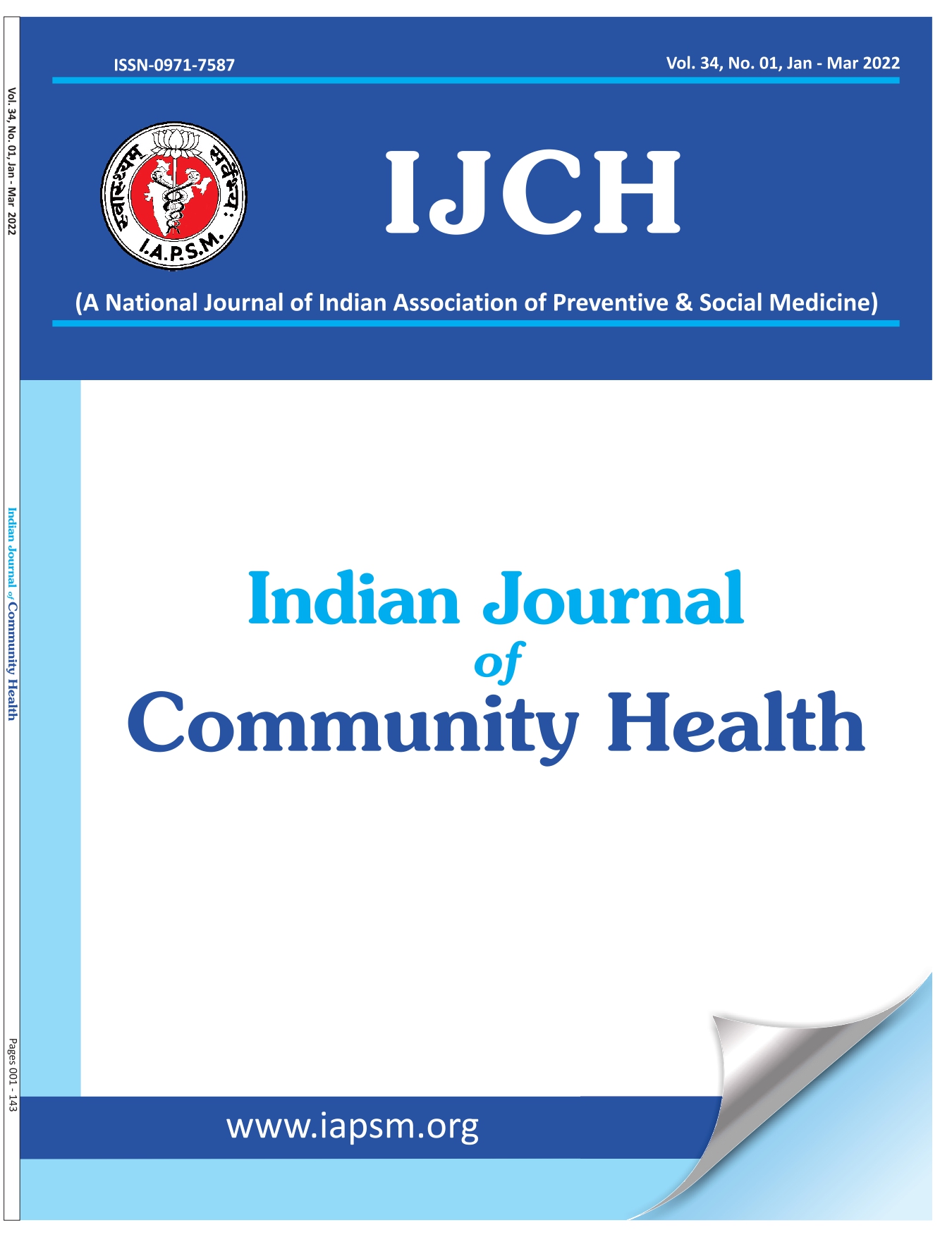Comparative Study of Prevalence of Early Initiation of Breast Feeding, Its Enablers and Impeders
DOI:
https://doi.org/10.47203/IJCH.2021.v33i01.008Keywords:
Breastfeeding, Mode of delivery, Rural, Urban, Gestation, ParityAbstract
Background: In India the proportion of early initiation of breastfeeding is hovering around 50% and the proportion of cesarean deliveries is increasing substantially. Objectives: To compare the prevalence of early initiation of breastfeeding (EIBF) among cesarean and vaginally delivered women in hospitals in Pune District, Maharashtra State, India and to measure any association between EIBF and various socio-demographic, maternal and fetal factors. Methods: This was a multi-site study conducted in 13 selected hospitals in Pune District in 2017-18. Pune District by population is the fourth largest in India. All women delivered by cesarean section in these hospitals and an equal number of age and parity matched vaginally delivered women were enrolled. They were interviewed before discharge by obstetricians or nurses under the supervision of obstetricians, using a structured, validated tool. The data were analyzed by using Statistical Package for Social Sciences, version 25. Results: In each group, 1,556 women were enrolled. The prevalence of EIBF was 81.5% and 63.6% among vaginally and cesarean delivered women. There was a significant association between EIBF and the place of residence, mode of delivery, gestational period, parity, and presence of some disease. Residence in the rural area was the strongest enabling factor with an adjusted odds ratio of 29.6 (95% C.I.; 18.7-46.9) whereas cesarean section, preterm delivery and first para were impeding factors. Conclusions: Among institutional delivered women EIBF was about 70%. Health care workers need to strongly promote EIBF awareness, especially among women from urban areas, and undergoing cesarean section.





